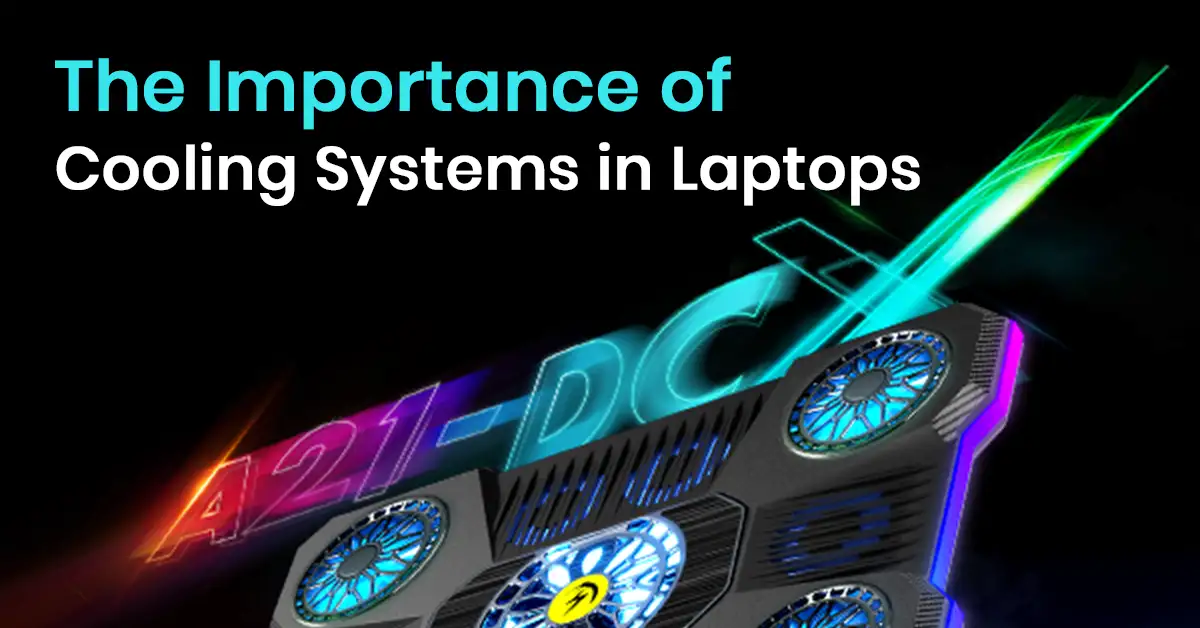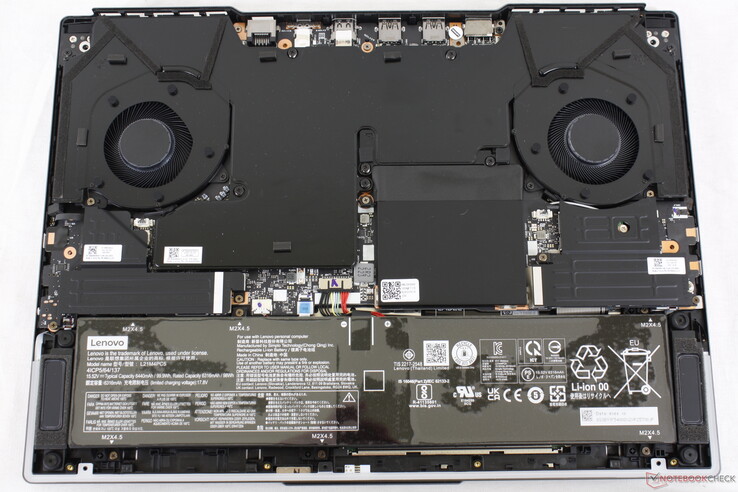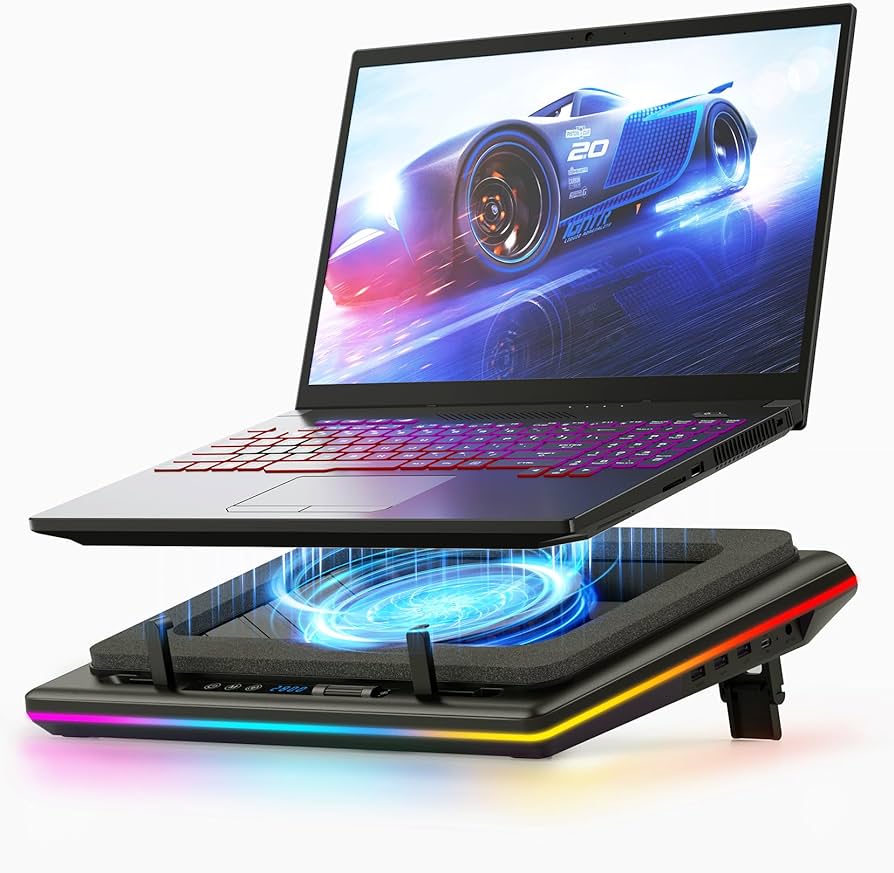Importance of Cooling Systems in Laptops – Protect Your Investment

Have you ever noticed your laptop getting uncomfortably hot during use? That heat isn’t just annoying – it can actually damage your device over time. This is where cooling systems come into play. A laptop’s cooling system is its first line of defense against the damaging effects of heat buildup, making it one of the most crucial components for long-term performance and reliability.
Unlike desktops, laptops have compact designs with limited ventilation, making them more susceptible to overheating. Whether you are a gamer, a video editor, or just someone who uses a laptop for everyday tasks, understanding the importance of cooling systems can help you make informed decisions when purchasing or maintaining your device. In this blog, we’ll explore why cooling systems are vital for laptops, how they work, and tips to keep your laptop cool.

How Cooling Systems Work in Laptops
Laptop cooling systems are designed to manage heat generated by the CPU, GPU, and other components. The two primary methods of cooling in laptops are:
- Air Cooling: Most laptops use small internal fans to dissipate heat. These fans pull in cool air and expel hot air through ventilation grills.
- Liquid Cooling: Some high-performance laptops (mainly gaming and workstation models) use liquid cooling to enhance heat dissipation, offering superior cooling performance.
Why Cooling Systems Matter in Laptops
1. Preventing Performance Throttling
Modern laptops automatically reduce performance (called “thermal throttling“) when temperatures get too high. A good cooling system:
- Maintains optimal operating temperatures
- Prevents unnecessary performance drops
- Ensures consistent speed during intensive tasks
2. Extending Component Lifespan
Excessive heat damages laptop components over time:
- CPU/GPU degradation
- Battery wear and reduced capacity
- Motherboard warping or solder joint failure
- Learn more to extend Laptop Lifespan and Maintenance Tips
3. Improving User Comfort
A cool laptop means:
- More comfortable typing experience
- No burning sensation on your lap
- Quieter operation (less fan noise)
4. Improves Battery Life:
- Overheating puts stress on the battery, reducing its lifespan.
- A cooler laptop consumes power more efficiently.
Types of Laptop Cooling Systems
1. Active Cooling Systems
- Uses fans to move hot air out
- Most common in gaming and workstation laptops
- Requires regular maintenance (cleaning dust)
2. Passive Cooling Systems
- Uses heat pipes and heatsinks only
- Found in fanless ultrabooks
- Silent but less effective for heavy workloads
3. Liquid Cooling (Rare in Laptops)
- Advanced cooling for extreme performance
- Mostly in desktop replacement laptops
- Requires special maintenance
Signs Your Cooling System Isn’t Working Properly
Watch for these warning signs:
- Frequent unexpected shutdowns
- Loud fan noises or constant high-speed spinning
- Performance drops during intensive tasks
- Keyboard or bottom case becomes uncomfortably hot
- Visual artifacts or screen glitches (GPU overheating). Also read this: Why is My Laptop Overheating? Causes and Solutions

How to Keep Your Laptop Cool
- Use a Cooling Pad:
- External cooling pads provide additional airflow, reducing laptop temperature.
- Keep Your Laptop on a Hard, Flat Surface:
- Soft surfaces (like beds and sofas) block air vents, leading to overheating.
- Clean the Fans and Vents Regularly:
- Dust buildup blocks airflow and reduces cooling efficiency.
- Use compressed air to clean vents and fans every few months.
- Adjust Power Settings:
- Reduce CPU usage by adjusting power settings to “Balanced” mode in Windows or macOS settings.
- Monitor Laptop Temperature:
- Use software like HWMonitor or Core Temp to track temperature levels.
- If the temperature frequently exceeds 85°C, consider professional servicing.
- Upgrade Your Thermal Paste:
- Over time, thermal paste dries out, reducing heat transfer efficiency.
- Reapplying high-quality thermal paste can significantly improve cooling
Choosing a Laptop with Good Cooling
When shopping for a new laptop, consider:
- Number and size of heat pipes
- Fan design and placement
- Ventilation cutouts in the chassis
- User reviews mentioning thermal performance
- Manufacturer’s thermal design claims.
- Select MUX switch enable laptop.
- Lenevo Legion, Asus ROG, Dell Alienware, Acer Predator etc has better cooling system.
DIY Cooling Improvements (Advanced Users)
For tech-savvy users:
- Replacing thermal paste (every 2-3 years)
- Adding thermal pads to VRM components
- Undervolting CPU/GPU (reduces heat output)
- Custom fan curve adjustments
When to Seek Professional Help
Contact a technician if you notice:
- Fans making grinding noises
- Overheating despite clean vents
- Thermal shutdowns during light use
- Visible damage to cooling components
Conclusion
Your laptop’s cooling system plays a vital role in maintaining performance, reliability, and comfort. By understanding how cooling works and implementing simple maintenance practices, you can significantly extend your laptop’s lifespan and enjoy consistent performance. Remember that prevention is always better than repair when it comes to heat-related damage.
For laptops with excellent cooling systems or quality cooling accessories, visit Area 51 to explore our selection. Your laptop (and lap) will thank you!
FAQ Section
Q1: How often should I clean my laptop’s cooling system?
A: Every 3-6 months for normal use, more often if you have pets or use your laptop in dusty environments.
Q2: Are laptop cooling pads worth it?
A: Yes, good quality cooling pads can reduce temperatures by 5-10°C, especially helpful for gaming laptops.
Q3: Can overheating permanently damage my laptop?
A: Yes, prolonged overheating can degrade components and lead to premature failure of CPU, GPU, or battery.
Q4: Why does my new laptop run hotter than my old one?
A: Modern laptops pack more powerful components in thinner designs, creating greater thermal challenges.
Q5: Is it normal for gaming laptops to get very warm?
A: Yes, but they shouldn’t get hot enough to cause discomfort or thermal throttling during normal use.
